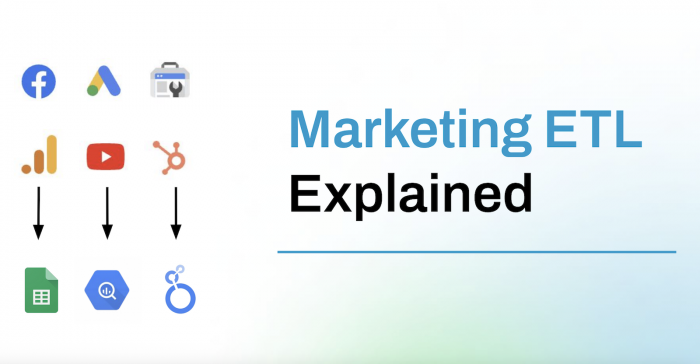Why Disorganized Information Is Costing You More Than You Think
“Everything not saved will be lost.”
A warning from an old game, sure, but it hits differently when you’re 14 tabs deep, looking for a file you last saw in March.
You’re mid-deadline, someone pings you for that presentation, and suddenly, you’re elbow-deep in folders named “Old Stuff, “Random 2024,” and the timeless classic “Final_v3_REALLYfinal.”
Sound familiar? It should, because most teams aren’t working with systems—they’re working with digital junk drawers.
And while it might feel like a minor headache, that mess builds up. Wasted time. Missed details. Slower decisions. Disorganized info doesn’t just make things annoying; it quietly costs you money, trust, and momentum.
The true price tag of digital chaos
When teams spend substantial portions of their day hunting for information instead of using it, the numbers become staggering. Research from IDC reveals that knowledge workers dedicate approximately 2.5 hours daily to searching for the information they need to do their jobs effectively. Multiply that across your entire team, then calculate the annual impact; the results paint a sobering picture of lost productivity.
This time drain represents just the tip of the iceberg. Delays in finding information cascade into postponed decisions, missed deadlines, and duplicated efforts. Team members unknowingly work on outdated versions of projects while others reinvent solutions that already exist somewhere in the digital maze. Clients receive inconsistent information, and critical details slip through the cracks when multiple versions of documents circulate simultaneously.
The financial implications extend beyond immediate productivity losses. When disorganization leads to errors in client deliverables or missed opportunities due to delayed responses, the cost multiplies exponentially. Trust erodes, relationships strain, and competitive advantages disappear as competitors with simpler processes move faster and more efficiently.
When file names become battle cries

Poor file organization creates several costly problems:
- Wrong versions get shared—team members accidentally present old drafts to clients or send outdated information to stakeholders.
- Confidential data gets mishandled—without clear naming, sensitive files get shared when they should stay internal.
- Auto-save creates chaos—collaboration platforms generate endless drafts and conflicting updates.
- Finding files becomes guesswork—cloud storage turns into a maze where locating specific documents requires luck.
- Business relationships suffer—version mix-ups damage client trust and create professional embarrassment.
The mental load of information overload
Beyond the practical inefficiencies lies a more insidious cost: the cognitive burden of operating within chaotic systems. Each time someone encounters disorganized information, micro-decisions multiply. Should this document be shared? Which version contains the most current data? Where should this new file be stored to ensure others can find it?
These constant small decisions create cumulative mental fatigue that affects decision-making quality and overall job satisfaction. Teams begin operating with heightened caution, double-checking and second-guessing themselves because they lack confidence in their information systems. This hesitation slows down processes and reduces the bold, innovative tingling that drives business growth.
The psychological impact extends to team morale as well. When simple tasks become complex due to poor organization, employees receive an implicit message that their time and efficiency matter less than maintaining the status quo. This perception gradually erodes engagement and contributes to the kind of workplace frustration that drives talented people to seek opportunities elsewhere.
Organizational improvements by facilitating documents
Sometimes the path to better information management starts with addressing the small inefficiencies that accumulate over time. Consider the common scenario of oversized PDF documents filled with outdated sections, redundant pages, or legacy content that no longer serves any purpose. These bloated files slow down systems, confuse readers, and make it harder to extract relevant information quickly.
When you need to remove PDF pages, having access to efficient tools makes the process straightforward and painless. This type of document streamlining with SmallPDF represents a broader principle: building habits around pruning rather than simply accumulating information. Implementing clean, focused documents enables faster review, clearer communication, and more confident decision-making.
When multiple tools create multiple problems
Simplifying documents is only half the solution. The other culprit? Too many tools pulling in different directions.
- Slack for messages, Google Drive for docs, Trello for tasks, Notion for notes…states typical?
- Each tool works—until it doesn’t. Without structure, they become silos.
- Context gets lost, accountability blurs, and basic questions eat up time.
- Tool fatigue sets in: too many platforms, not enough clarity.
- Efforts to increase efficiency ultimately result in a slowdown.
The hidden costs of cognitive overload
The mental exhaustion that comes from navigating poorly organized systems creates a fatigue that regular rest cannot address. Every search through irrelevant results, every moment spent toggling between platforms, and every instance of information uncertainty adds to a cognitive tax that affects overall performance and well-being.
This cognitive burden manifests in various ways across organizations. Meeting efficiency decreases when participants spend time clarifying which documents or data sets they’re discussing. Email volumes increase as team members ask questions that well-organized information systems would answer automatically. Project timelines extend as teams pause to verify information accuracy and locate supporting materials.
The cumulative effect touches team culture as well. When accessing information requires significant effort, people begin to hoard knowledge rather than share it freely. Collaboration suffers as individuals create personal filing systems that make sense only to them, further fragmenting organizational knowledge and making cross-functional projects more challenging.
When systems set you up to fail
The stakes for every mistake go up when systems are not in place. They do more than just slow things down. Teams use old information, send the wrong files, and base their campaigns on data that isn’t very reliable.
What's the most problematic aspect? People are usually to blame, not the broken systems that cause them. Automation only makes it messier, scaling up errors at lightning speed. When folders are chaotic and naming makes no sense, even smart people make avoidable mistakes. Fixing the structure consistently outperforms finger-pointing.
The repercussions of improved organization
It’s not just time savings that happen when information flows smoothly through well-thought-out systems. When people come to meetings with up-to-date, correct information, they are more likely to get things done. Teams can communicate better with clients when they can quickly find relevant history and context. When data is easy to find and presented clearly, decision-making goes faster.
Trust levels increase both internally and externally. Team members develop confidence in their information systems, leading to bolder decision-making and more innovative approaches. Clients experience faster response times and more consistent service quality. Stakeholders receive timely, accurate updates that demonstrate professionalism and attention to detail.
The competitive advantages compound over time. When market conditions change, organizations that manage their information more skillfully can adapt more quickly, meet customer needs more quickly, and focus more on strategic initiatives rather than inefficient administrative tasks.
Creating information hygiene that will last
Setting up procedures and habits instead of just reorganizing things every so often is the only way to make improvements that last. Consistent naming rules that make sense to current team members and will still make sense to future colleagues are the first step to good information management. Folder structure should be based on logical hierarchies that show how people really find and use information.
Multiple versions of important documents that might not agree with each other can be confusing. Single sources of truth get rid of this problem. When you archive regularly, you get rid of old information that makes search results harder to understand. Audits of shared systems every three months help keep things organized over time and stop most digital environments from becoming disorganized over time.
Business systems stay usable as teams grow and change thanks to training and documentation. Information management stops being an individual job and becomes a shared responsibility when everyone knows and follows the rules.
Moving forward with intention
To sort out information better, you don’t have to buy expensive new platforms or completely redo your systems. Making smart decisions about how to create, store, and maintain information is key to success. Small improvements made over time add up to big benefits over time.
Start with an area that is giving you trouble, like a shared drive that is too big for you to handle or a project folder that no one can get to quickly. Use clear naming rules, set up folder structures that make sense, and get rid of content that is no longer relevant. Applying the same ideas to other parts of your information ecosystem will help you build on these successes.
Putting effort into getting things in order pays off in ways that go far beyond saving time. People on teams feel more confident, clients get better service, and everyone can focus on important work instead of digital archaeology. When information helps you reach your goals instead of getting in the way, your business as a whole benefits from being clear and precise.
Author:
Mika Kankaras
Mika is a fabulous SaaS writer with a talent for creating interesting material and breaking down difficult ideas into readily digestible chunks. As an avid cat lover and cinephile, her vibrant personality and diverse interests bring a unique spark to her work. Whether she's diving into the latest tech trends or crafting compelling narratives for B2B audiences, Mika knows how to keep readers engaged from start to finish. When she’s not writing, you’ll likely find her rewatching classic films or trying to teach her cat new tricks (with mixed results).
Post Comment
Be the first to post comment!





